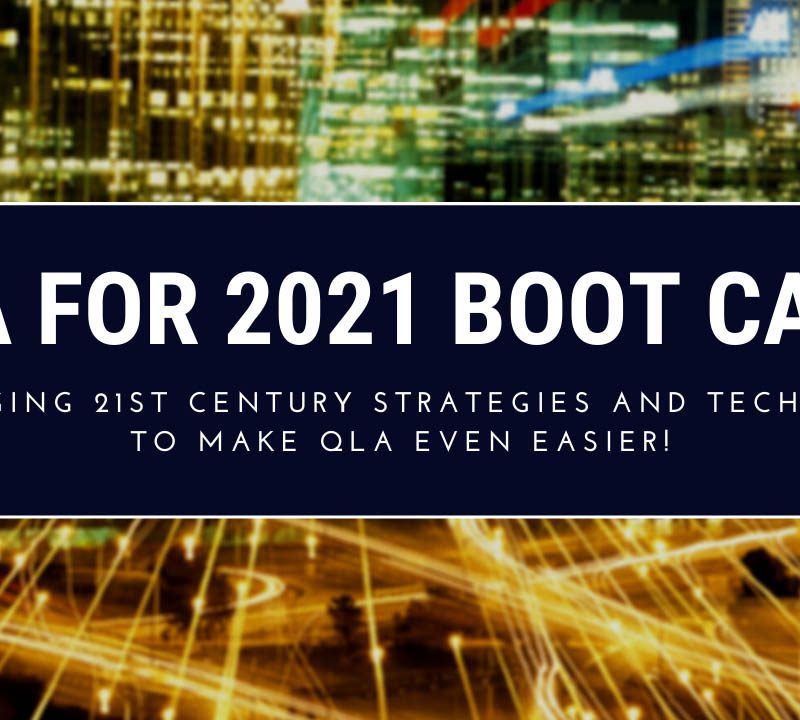[GroupBuy] Unlocking Donald Trump’s Money Secrets
$19.00
Discount 20% if your total cart over $150
- Satisfaction Guaranteed
- Fast and forever download link
- Secure Payments
- Reupload FREE
Description
This article delves into the purported strategies behind Donald Trump’s phenomenal financial success, as outlined in “Trump’s Money Secrets: A Guide to Financial Empire.” We examine whether these strategies are truly replicable, exploring the book’s claims and offering critical analysis of the path to wealth creation. Unlocking Donald Trump’s Money Secrets requires a nuanced understanding of both his business acumen and the inherent complexities of building a financial empire.
The Myth of Luck: Deconstructing Trump’s Fortune
The central argument of “Trump’s Money Secrets” is that Donald Trump’s wealth is not a product of chance or inherent privilege, but rather the result of calculated actions and meticulously applied principles. This directly challenges the narrative often surrounding exceptionally wealthy individuals – that their success is largely a matter of luck or being in the right place at the right time. The book contends that anyone can replicate Trump’s methods, regardless of their starting point. But is this a realistic claim, or simply aspirational marketing? Let’s examine the core tenets.
Identifying and Capitalizing on Opportunities
Trump’s success, according to the book, hinges on an acute ability to identify and aggressively pursue lucrative opportunities. This involves not just recognizing potential, but also possessing the courage and shrewdness to leverage it effectively. It’s not enough to spot a rising trend; one must be able to anticipate its trajectory and position oneself strategically to maximize profits. This often includes taking calculated risks, a facet that Trump is often associated with. The book suggests he didn’t shy away from ventures others perceived as too risky, understanding that substantial rewards often come with a degree of uncertainty.
This aspect of opportunity identification extends beyond simply finding a good deal; it involves developing a keen eye for market trends, analyzing potential pitfalls, and anticipating future growth. Trump’s approach seemingly involved a combination of meticulous research, intuitive understanding of market dynamics, and a healthy dose of calculated risk-taking. Few individuals possess such a refined combination of skills. But perhaps the book outlines training strategies to develop these skills.
The success in identifying and capitalizing on opportunities depends on a nuanced understanding of the market principles. This is not a skill that could be learned overnight, but rather a skill slowly nurtured over years of practice and experimentation. Even with the knowledge from this book, real-world application requires continuous monitoring of economic indicators, careful analysis of competitors, and accurate predictions of market trends, all demanding consistent attention and in-depth expertise.
Calculated Risk-Taking and Strategic Decision-Making
Critical to Trump’s strategy, as depicted in the book, is his willingness to take calculated risks. This isn’t reckless gambling, but rather a measured approach where the potential rewards outweigh the perceived risks – after careful analysis and strategic planning. This calculated risk-taking is embedded in every aspect of his business strategy, from real estate development to branding and negotiation. The art lies not just in identifying opportunities, but in assessing the inherent risks and developing mitigation strategies. The author’s assertion rests on the careful balance between reward and risk, an aspect that many aspiring entrepreneurs often fail to fully grasp.
The ability to take calculated risks, however, is interwoven with a far more important skill: effective decision-making. This process goes far beyond a simple cost-benefit analysis. The decisions made often hinges upon effective risk assessment, understanding of the market conditions and careful prediction of future scenarios. This necessitates far more complex decision-making processes, which incorporate careful research and analysis, to accurately predict the odds and outcome of a decision.
Moreover, calculated risk-taking is deeply intertwined with risk management. While the book emphasizes the importance of taking risks, it’s equally crucial to manage those risks effectively. This involves developing contingency plans, diversifying investments, and securing appropriate insurance and legal protections—all aspects not always explicitly highlighted in narratives emphasizing aggressive pursuit of profits. The omission of this crucial component of risk management could mislead readers into believing that simply taking risks is sufficient for achieving success.
The Art of Negotiation and Deal-Making
Negotiation forms a cornerstone of Trump’s business philosophy, as portrayed in the book. It emphasizes securing favorable terms, maximizing profits, and leaving competitors at a disadvantage. The book likely portrays Trump’s negotiations as not merely transactional, but as a calculated process to leverage his strengths, identify weaknesses in others and control the narrative and pace of the discussion. This aspect extends beyond simple bargaining; it involves understanding psychology, body language, and the art of persuasion – crucial skills often overlooked in traditional business education.
Yet, the ability to negotiate effectively doesn’t solely rely on innate talent or aggressive tactics. Effective negotiation often involves substantial preparation, market research, and an in-depth understanding of the legal and financial implications of each deal. The level of expertise and preparation required goes beyond the scope of business savvy; it necessitates a team of professionals, legal counsel, financial advisors and market analysts who provide strategic guidance and insights, to ensure that each deal is strategically planned.
This also highlights the importance of building relationships. While aggressively negotiating for the best possible deal might seem crucial for short-term gains, the book likely alludes to a long-term consideration by advocating to building and maintaining robust professional relationships. This approach emphasizes the enduring value of loyalty and trust in creating a solid foundation for long-term business collaboration, which may counter Trump’s often-portrayed antagonistic negotiation style.
Applying Trump’s Principles: From Theory to Practice
The book positions itself as a practical guide, promising readers actionable strategies to implement immediately. However, faithfully replicating Trump’s success requires more than just absorbing the principles; it necessitates overcoming significant hurdles and possessing specific skills. The book may oversimplify the complexities of real-world application. Let’s explore some of the practical challenges.
Access to Capital and Resources
One of the most significant barriers to replicating Trump’s journey is access to capital. He started with significant family wealth, giving him an advantage many lack. The book’s assertion of the replicability of Trump’s strategies might not account for this crucial factor. While the book may claim its strategies work for all, the reality is that obtaining significant capital and resources forms a crucial initial step. This necessitates either possessing significant personal funds or the ability to secure loans or investments, which many aspiring entrepreneurs find to be more challenging than anticipated.
Even when substantial capital becomes available, deploying it efficiently and strategically is complex. This is typically where many companies fall short. The book does not delve into these nuanced complexities. Simply obtaining capital does not translate to immediate success. The decision-making process to determine which venture to invest in, when to scale and ultimately how to exit the venture are critical factors which all require a multi-faceted approach to ensure success.
Access to high-quality professional talent and a robust network of strategic partners is a further critical aspect rarely discussed. Trump’s success often stems from leveraging a strong team and strategic partners. Such resources, typically acquired over years of development of relationships, are not easily replicated, and should not be seen as readily available and accessible to every aspiring entrepreneur. This omission may lead many to believe that solely adopting the business strategies could lead to success without accounting for access to critical human resources.
Navigating Legal and Regulatory Frameworks
The legal and regulatory landscape governing business operations is often complex and fraught with intricacies. While the book may present Trump’s strategies as readily available and applicable to anyone, it fails to address to the challenges of compliance. Compliance with numerous legal and regulatory requirements is vital for success, and can present significant obstacles which must be considered at all stages of a business venture. Navigating these legal complexities, including securing necessary permits and licences, and complying with relevant regulations often requires an in-depth expertise and professional advice, which might not be readily available to everyone.
The dynamic nature of the legal and regulatory landscapes further complicates the process. Regulations are subject to change and updates, and requires further in-depth knowledge and resources to ensure that the business remains compliant at all stages. Moreover, potential legal challenges and disputes typically form part of any aggressive business pursuit. The book’s failure to address these crucial legal dimensions is a key deficiency, potentially misleading readers pursuing such strategies.
Furthermore, the competitive environment is one often under-estimated. Aggressive business strategies often trigger legal battles and competition, which requires the resources and expertise to manage such challenges. The lack of awareness related to these challenges undermines the reliability of the book’s key assertion towards replicating Trump’s business success, as such strategies often carry an inherent risk of legal challenges which goes beyond simple compliance.
Overcoming Systemic Barriers and Biases
The book’s promise of replicating Trump’s success must also acknowledge systemic barriers to entry and potential biases within the business world. Systemic biases can significantly impact the entrepreneurial journey. Factors beyond the control of entrepreneurs include access to capital, social and economic backgrounds, gender and racial disparities and even political climates. These all present impediments and challenges to simply replicating a business strategy. The book’s failure to address such obstacles renders the assumption of replicability inherently optimistic and potentially misleading.
The book’s apparent lack of attention towards the influence of systemic challenges represents a critical omission. The lack of attention towards such systemic biases represents a naive and overly simplified view of the process, assuming a level playing field which does not exist in reality. Simply replicating a strategy ignores the pervasive presence of systemic influences which impacts the possibilities of success irrespective of capability.
The Power of Branding and Self-Promotion
Beyond the core business strategies, “Trump’s Money Secrets” likely highlights the crucial role of self-promotion and branding in building a successful personal and corporate image. Trump’s persona, often controversial, became inextricably linked to his brand. This suggests the book may emphasize the importance of cultivating a strong personal brand that can resonate with consumers and investors, and potentially build a reputation that attracts opportunities.
Cultivating a Powerful Personal Brand
The book might explore the power of personal branding and its role in attracting opportunities. This extends beyond mere marketing; it involves cultivating a specific image, building trust, projecting confidence and creating relationships which leads to opportunities. Building a robust personal branding, however, requires significant effort and careful management. It requires consistent self-promotion, and effective engagement across multiple channels. Moreover, maintaining a consistent brand identity, and adapting to evolving customer expectations, require continuous efforts for long-term success.
Creating a strong personal brand can become a challenge in an ever-changing social media landscape. The digital realm provides potential avenues to create visibility, but comes with the risk of negative publicity which can irreparably damage a brand. Effective brand management extends beyond mere positive publicity; it involves carefully monitoring image and reputation, and proactively addressing potential negative publicity and controversies to mitigate impact on the brand image.
Leveraging Media and Public Relations
Trump’s strategic use of media and public relations is likely a key focus. The book may present it as a tool for shaping public perception and generating positive media coverage. This involves deftly managing media appearances, crafting persuasive narratives and responding strategically to critical coverage. The strategic use of carefully curated media appearances highlights the ability to control narratives which could impact public perception and potentially secure lucrative opportunities.
Effective media management and public relations require specialized skills and continuous efforts. It necessitates developing robust networks with media personnel, securing positive media coverage and reacting strategically to potential negative impacts on reputation. Moreover, effective management requires advanced and refined communication skills, including excellent writing and public speaking abilities. The ability to manage relationships with media personalities is crucial for long-term branding success.
The Importance of Consistent Messaging
Maintaining a consistent brand message is imperative for long-term success. The book likely emphasizes the need to establish core brand values and communicate them consistently across all platforms. This creates a strong sense of brand identity enabling consumers to effectively identify and understand the brand message. Consistency across multiple channels builds brand recognition and establishes trust with consumers and investors. Inconsistency often leads to confusion and damage in a personal brand.
Consistency, however, requires continuous efforts that go beyond initial brand creation. The ability to maintain messaging across multiple platforms and interactions necessitates substantial planning and management. It requires close monitoring of all communication efforts, ensuring that all interactions correctly convey the core values and principles of the brand. In a rapidly changing media landscape, consistency requires adapting communications to fit the ever-changing environment, to ensure message resonates with the intended audience.
Critical Analysis and Potential Pitfalls
While “Trump’s Money Secrets” offers valuable insights into potential strategies, several critical aspects need consideration to avoid a misguided approach to wealth creation.
The Role of Privilege and Starting Capital
The book’s assertion of replicability needs to account for the undeniable advantage of Trump’s privileged upbringing and substantial family wealth. His starting point, which gave him access to capital and networks unavailable to most, cannot be ignored when assessing the authenticity of claims for strategy replicability. The book’s assumption that its strategies are equally applicable to all overlooks the unequal playing field of privileged backgrounds.
The lack of emphasis on the initial capital and family support provided undermines the overall message. The book’s claim of the general replicability of his success fails to acknowledge the crucial factor that his success was partially dependent upon an initial advantage in terms of capital and support. This creates a misleading perception that success is solely due to strategy and less due to circumstances, access and privilege.
Furthermore, the oversimplification of success creates a perception that ignoring initial requirements would lead to success. This ignores the reality that most individuals do not possess significant initial capital. This renders the book’s primary message less authentic and even potentially misleading, by excluding a crucial factor to success.
Ethical Considerations and Potential Negative Outcomes
Trump’s business practices have faced scrutiny for their ethical implications. The “Trump’s Money Secrets” guide should reflect any possible ethical considerations associated with its strategies, avoiding misrepresenting success as always being ethical. The pursuit of profits should always remain balanced with adherence to ethical principles and legal compliance.
Any focus on aggressive deal-making or calculated risk-taking without regard for ethical consequences runs the risk of promoting questionable business practices. The book should not present strategies promoting unethical behavior and illegal activities. Moreover, strategies should always strive to stay within appropriate ethical and legal parameters.
Finally, the book should address the potential for negative social impacts. Strategies that prioritise profit maximization without considering environmental and social implications can perpetuate inequalities and create unsustainable practices. The pursuit of wealth should always consider its potential negative consequences on society and environment, and not purely focus on maximising profit.
The Limits of Emulation and the Importance of Personal Adaptation
Simply following Trump’s strategies may not guarantee success. The book needs to emphasize the importance of personal adaptation, critical thinking, and a willingness to evolve strategies based on evolving market conditions. Blindly copying a model without understanding the underlying principles and adapting to individual circumstances is rarely successful.
The book should therefore highlight the importance of individual adaptation and context. Every individual brings a unique set of skills, capabilities and resources. Therefore, a strategy must be personally adapted to optimize its effectiveness. Furthermore, the strategies described should not be seen as fixed and static. Strategies must evolve and adapt to changing conditions and market demands.
Ultimately, “Trump’s Money Secrets” offers a controversial perspective on wealth creation. Its claims of readily replicable strategies must be analyzed critically, acknowledging factors beyond simply adopting certain business tactics.
Conclusion
Unlocking Donald Trump’s Money Secrets, as presented in the book, requires a nuanced understanding that goes beyond simply adopting specific strategies. While the book highlights key principles like identifying opportunities, calculated risk-taking, and effective negotiation, critical analysis reveals the significant role of privilege, access to capital, and ethical considerations in shaping his success.
While the strategies offered might provide valuable insights, the book’s promise of effortless replication needs to be tempered with a realistic assessment of the considerable challenges and complexities involved in building a financial empire. Ultimately, success in any entrepreneurial endeavor demands more than just the adoption of pre-defined strategies; it requires personal adaptation, resilience, and a profound understanding of the complexities of the business world.
Sales Page:_https://bovolorus.gumroad.com/l/dotcdn
Delivery time: 12 -24hrs after paid





